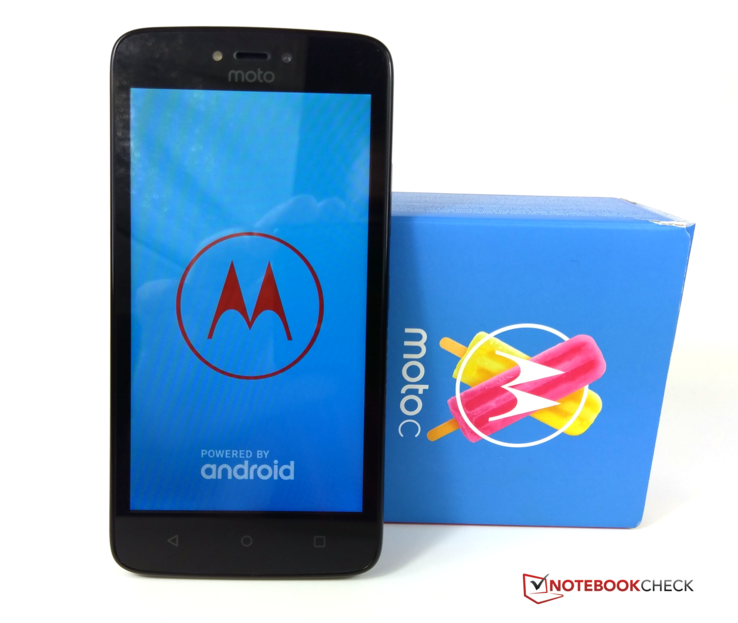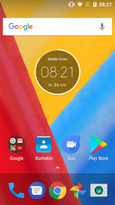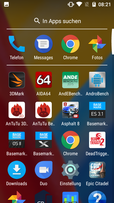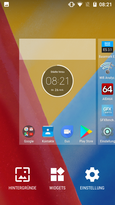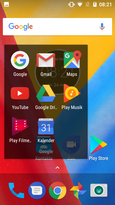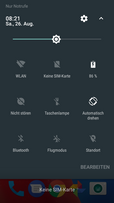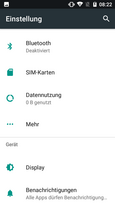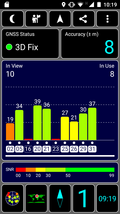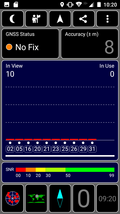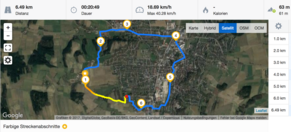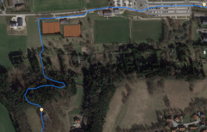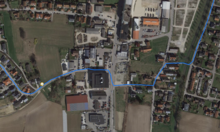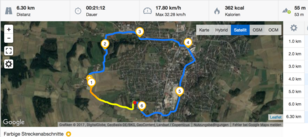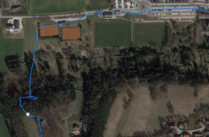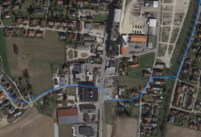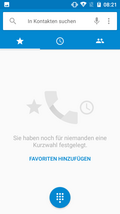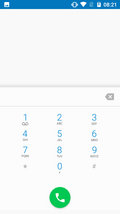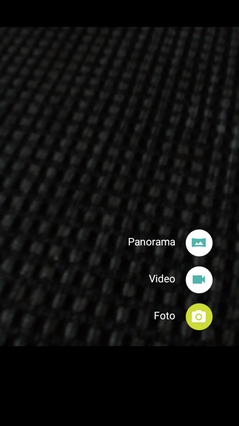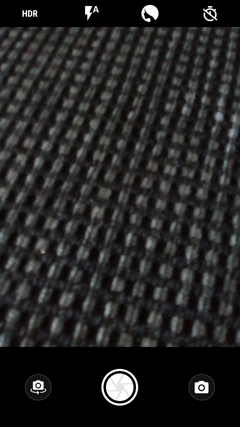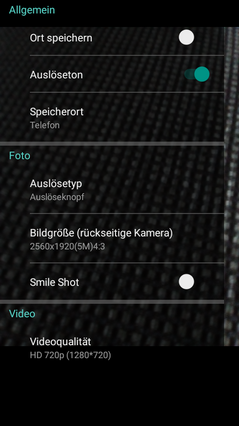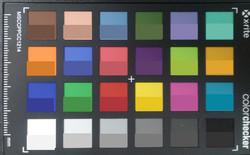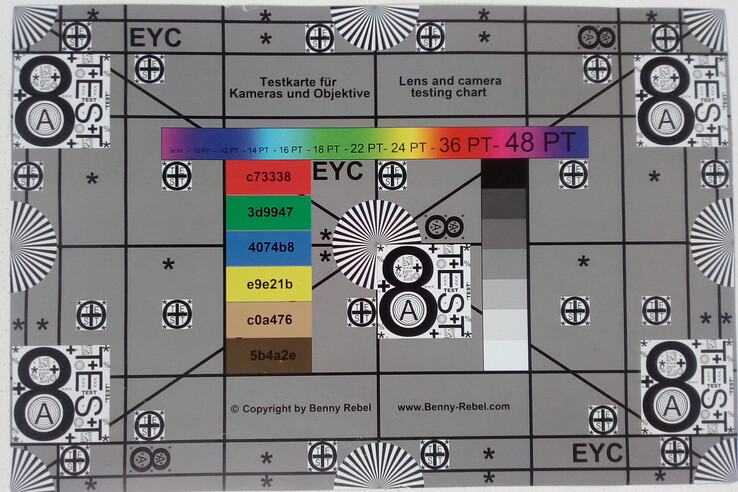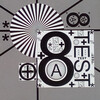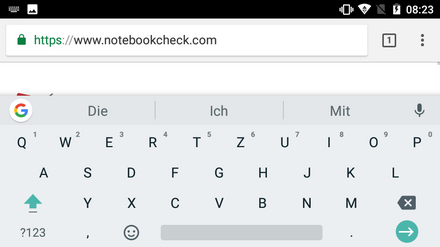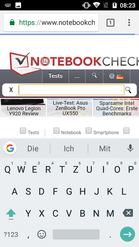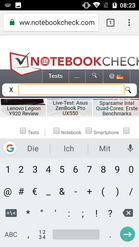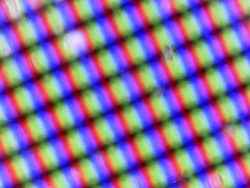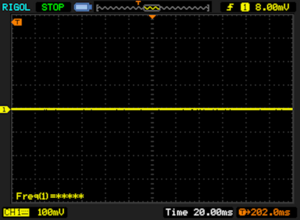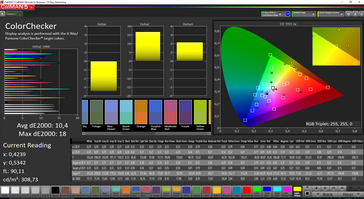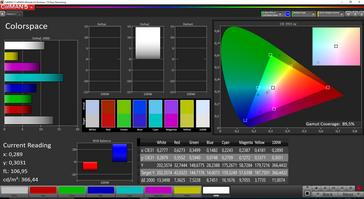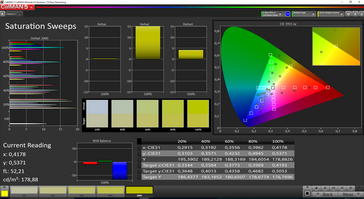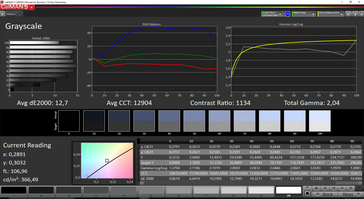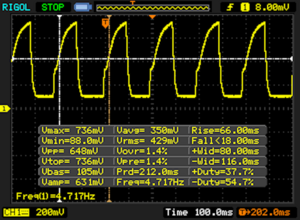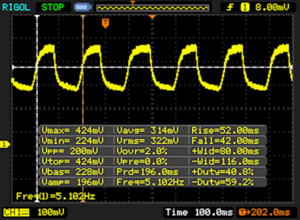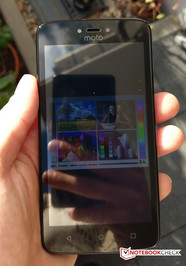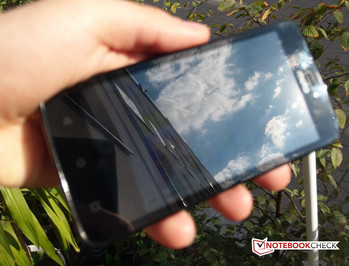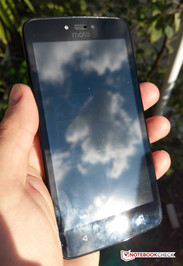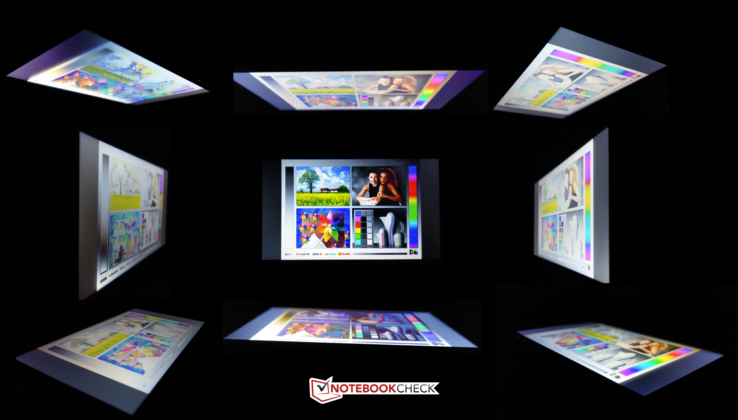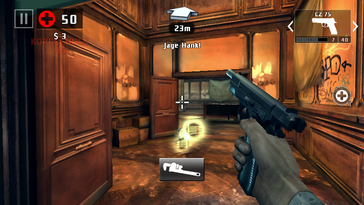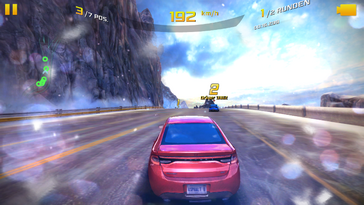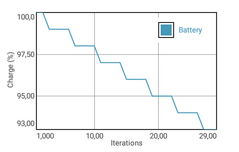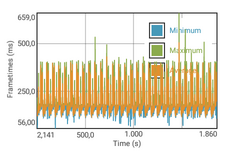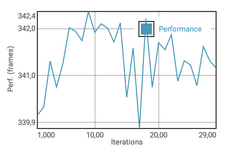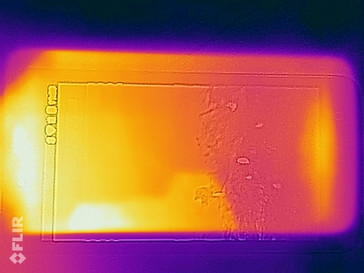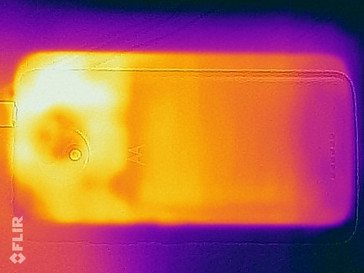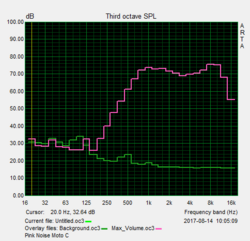Lenovo Moto C Smartphone Review
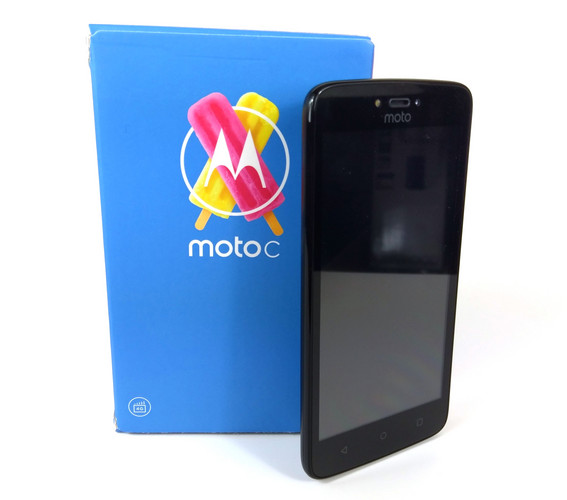
For the original German review, click here.
If the affordable fourth-generation Moto E series is still too expensive for you, you will be happy to hear that a suitable Motorola/Lenovo device has appeared on the market. The Chinese manufacturer's new Moto C series is positioned in the lower price segment of entry-level devices and is available for £85 (~$109, the Moto C is not available in the US at the time of writing). You can choose between the Moto C and a Plus version with better hardware for £140 (~$181).
The 5-inch device is equipped with a 64-bit MediaTek MT6737 SoC, which has an integrated Mali T720 GPU. Apart from the LTE version we tested, there is also a 3G version of the Moto C available. This model contains a 32-bit MediaTek SoC (MT6850). The device has 1 GB of RAM and 16 GB of ROM available and its battery has a capacity of 2350 mAh. Should the battery run out when you are out, you can swap it easily.
You cannot have everything, however, and so display quality and equipment are a little disappointing. The Moto C's TFT panel has a very low resolution of 854x480 pixels and the 2-MP front camera and 5-MP main camera only have fixed focus. The entry-level device does not have a fingerprint sensor or NFC.
There is a lot of competition in this price range and especially smartphones imported from China can offer very good technical features in the £100 (~$129) segment. These include the Gretel A9 and the UleFone Metal, which we have included in our list of comparison devices. Other alternatives to the Moto C are the Archos 50 Platinum 4G, the Huawei Y5 II, the Lenovo C2 as well as the ZTE Blade A510.
Case
The case is made of plastic and is available in Starry Black, Fine Gold and Metallic Cherry. The Moto C has a low display-to-surface ratio of 64%, although this is still acceptable considering its price range and competition. For example: The fronts of the Archos 50 Platinum 4G or the ZTE Blade A510 only have a display-to-surface ration of 66% and 68%. Overall, the device is nice to handle, even if the Moto C feels rather large with its thickness of 9 mm (~0.35 in).
The choice of material and workmanship are good for an entry-level device. Despite the removable back, the device does not make too much noise when twisted, but the case still does not appear to be of very high quality. The plastic cover on the back looks cheap and lacks the nice feel that, for example, the UleFone Metal offers with its metal case.
The volume rocker and on/off button are located on the right side of the case. They are positioned firmly and are easy to reach with firm pressure points. Not much to complain about for a device of this price range.
Connectivity
The 16-GB internal eMMC storage is large enough for an entry-level device in 2017. After subtracting the space needed for the operating system, the user is left with about 10.68 GB. If you need more capacity, you can additionally expand storage by up to 32 GB with a microSD card. This can also be configured as internal storage. During our test, the device even accepted our reference card with a capacity of 64 GB.
The Moto C has a Micro-USB 2.0 port at the top of the device, which can be used to recharge the phone. It is not possible to connect external devices such as keyboards or USB sticks via USB OTG with this port. Overall, the Lenovo smartphone has rather meager connectivity. It does not offer an LED light for notifications, nor does it offer a brightness or fingerprint sensor. The device is equipped with an FM radio and Miracast for wireless streaming, which worked well in our test.
Software
Lenovo has chosen the seventh Android generation for its entry-level smartphone. At the time of testing, the security patches were from June 2017. The manufacturer has added its own interface, which is strongly reminiscent of stock Android in form and functionality. The system interface has hardly changed, but the device offers a few additional software features.
Luckily, the preinstalled apps are limited to a few apps from Lenovo and Google. There are no third-party applications such as Facebook or Instagram.
Communication & GPS
The Moto C has Bluetooth 4.2 to take care of wireless communication with other mobile devices. The device is not equipped with an NFC chip for near field communication.
The Internet is accessed with LTE cat.4 speeds and the dual-SIM smartphone offers space for two Micro SIM cards, both without limitation to the GSM network. As expected from a device of this price range, the available frequencies are rather limited, but the Moto C should be well-equipped for communication within Europe.
The Wi-Fi module supports the IEE 802.11 standards b/g/n and the signal is limited to -36 dBm in close proximity to the router (Telekom Speedport, W921V). This creates the low-budget device's typical data transfer rates to our reference router Linksys EA8500. We measured 47 Mbit/s (iperf server) and 44 Mbit/s (iperf client), which is very low, but other devices in this price range did not do any better in our Wi-Fi test.
| Networking | |
| iperf3 transmit AX12 | |
| HTC U11 | |
| Lenovo C2 | |
| Gretel A9 | |
| ZTE Blade A510 | |
| Lenovo Moto C | |
| iperf3 receive AX12 | |
| HTC U11 | |
| Lenovo C2 | |
| ZTE Blade A510 | |
| Lenovo Moto C | |
| Gretel A9 | |
Mobile-positioning is enabled via the GPS satellite system. Outdoors, the Moto C located us reliably within 8 meters, but the signal strength is too low to locate us indoors.
To get an idea of the accuracy of our test device in practice, we let it record a route together with the GPS bicycle navigation system Garmin Edge 500. Over a distance of 6 km, the difference between what our test unit measured and what the professional navigation system measured was 190 meters. We can therefore say that the device's GPS accuracy is acceptable, although there is quite a bit of fluctuation of accuracy - especially in sharp turns.
Telephone & Voice Quality
Lenovo has stuck to the standard Google telephone app for its entry-level device. It offers the usual functions such as a call log and an integrated telephone book.
To test the Moto C's voice quality, we made some calls via the German mobile network (Vodafone). The audio quality of the earpiece was satisfying, although our call partner sounded a little unclear and there was some background noise. Maximum volume could be higher as well. The voice quality of the microphone was good and our call partner could understand us well during the test call, despite being accompanied by a slight reverb.
Cameras
The main camera on the back of the Moto C has a resolution of 5 MP and takes pictures in the 4:3 format (2560x1920 pixels). The CMOS image sensor's pixels have a length of 1.44 μm. The camera module has an angle of view of 78 ° and an aperture of f/2.4. Videos can be recorded in HD resolution at 30 fps.
In daylight and good lighting conditions, the back camera takes good shots with high details and good image sharpness - despite not having auto-focus. The dynamics in the photographs are high and photos are quite light. Colors, however, appear a little washed-out on the Moto C and the device is not suited to macro shots due to its fixed focus.
The Moto does not produce good photos in the dark or in bad lighting conditions despite its good pixel size. The absolute brightness is sufficient, but image sharpness is not ideal, which results in high image noise.
The second camera on the front has a resolution of 2 MP. Apart from the lower resolution, the CMOS image sensor only has an aperture of f/2.8 and pixel size of 1.0 µm. The 63 ° wide-angle module can take good-quality images if there is enough light available. This camera also misses auto-focus for adaptive image sharpness. The front camera records videos in HD resolution at up to 30 fps.
We took a closer look at the color accuracy of the main camera under controlled lighting with the help of the X-Rite ColorChecker Passport. Most colors shot with the Moto C are more washed-out and not saturated enough. The entry-level device does do a good job with white balance, though.
Our test chart shows that photographs are still nice and sharp at the edges, although there is a slight drop in sharpness. Other devices of this price range (that have auto-focus) have performed worse.
Accessories & Warranty
The smartphone comes with a user's manual, a USB cable and a modular 5-watt power supply.
The manufacturer offers a 24-month warranty from date of purchase. Please see our Guarantees, Return policies and Warranties FAQ for country-specific information.
Input Devices & Handling
The glass surface of the Moto C has good gliding qualities and the capacitive display has good sensitivity even at the edges. Although the touchscreen responds fast enough, it is not always reliable and does not always recognize inputs at the first try.
You can navigate with three unlit capacitive keys below the display. The device has the standard Google keyboard preinstalled, but this can be replaced by another version from the Google Play Store.
Display
The 5-inch TFT display of the Moto C has a resolution of 854x480 pixels, with a density of about 196 ppi. This resolution is not up-to-date anymore, even for everyday use.
The maximum luminosity of the Moto C is at 364 cd/m², which is bright enough for most situations, but it is easily outdone by the device's competitors. Brightness distribution is even at 92%. When we measured the screen brightness with evenly distributed light and dark surfaces (APL 50), we measured a lower value of 295 cd/m². The Moto C does not have an adaptive ambient light sensor to adjust screen brightness.
| |||||||||||||||||||||||||
Brightness Distribution: 92 %
Center on Battery: 364 cd/m²
Contrast: 1174:1 (Black: 0.31 cd/m²)
ΔE ColorChecker Calman: 10.4 | ∀{0.5-29.43 Ø4.77}
ΔE Greyscale Calman: 12.7 | ∀{0.09-98 Ø5}
89.5% sRGB (Calman 2D)
Gamma: 2.04
CCT: 12904 K
| Lenovo Moto C TFT, 854x480, 5" | ZTE Blade A510 IPS, 1280x720, 5" | Archos 50 Platinum 4G IPS, 1280x720, 5" | Huawei Y5 II IPS, 1280x720, 5" | Lenovo C2 IPS, 1280x720, 5" | Gretel A9 IPS, 1280x720, 5" | Ulefone Metal IPS, 1280x720, 5" | HTC U11 Super LCD5, 2560x1440, 5.5" | |
|---|---|---|---|---|---|---|---|---|
| Screen | 16% | -4% | -13% | 20% | 5% | -8% | 38% | |
| Brightness middle (cd/m²) | 364 | 528 45% | 344 -5% | 465 28% | 458 26% | 380 4% | 312 -14% | 482 32% |
| Brightness (cd/m²) | 355 | 524 48% | 349 -2% | 443 25% | 449 26% | 370 4% | 315 -11% | 472 33% |
| Brightness Distribution (%) | 92 | 94 2% | 89 -3% | 90 -2% | 92 0% | 90 -2% | 87 -5% | 90 -2% |
| Black Level * (cd/m²) | 0.31 | 0.62 -100% | 0.65 -110% | 0.84 -171% | 0.35 -13% | 0.39 -26% | 0.56 -81% | 0.33 -6% |
| Contrast (:1) | 1174 | 852 -27% | 529 -55% | 554 -53% | 1309 11% | 974 -17% | 557 -53% | 1461 24% |
| Colorchecker dE 2000 * | 10.4 | 5.2 50% | 5.8 44% | 7.8 25% | 6.5 37% | 8 23% | 6.8 35% | 3.2 69% |
| Colorchecker dE 2000 max. * | 18 | 8.7 52% | 10.7 41% | 15.7 13% | 11.7 35% | 13.6 24% | 14 22% | 5.4 70% |
| Greyscale dE 2000 * | 12.7 | 5.7 55% | 5.7 55% | 8.4 34% | 7.7 39% | 8.5 33% | 7.1 44% | 2.2 83% |
| Gamma | 2.04 108% | 1.99 111% | 2.1 105% | 2.07 106% | 2.15 102% | 2.8 79% | 2.77 79% | 2.22 99% |
| CCT | 12904 50% | 6631 98% | 7792 83% | 8438 77% | 8518 76% | 8337 78% | 7402 88% | 6581 99% |
* ... smaller is better
Screen Flickering / PWM (Pulse-Width Modulation)
| Screen flickering / PWM not detected | |||
In comparison: 53 % of all tested devices do not use PWM to dim the display. If PWM was detected, an average of 8081 (minimum: 5 - maximum: 343500) Hz was measured. | |||
The colors of the TFT panel appear strong and intensive in everyday use, the measured contrast is high enough at 1:174 and the black value is 0.31 cd/m². Our realistic APL50 measurement, which simulates an even distribution of light and dark surfaces on panel, also measured a black value of 0.31 cd/m² and a contrast of 1:925.
We used the photospectrometer and the CalMAN software to measure the color display of the TFT panel. The grayscales showed a significant blue cast and mixed colors had a high deviation. The measured color temperature is much too high at almost 13000 K compared to the ideal 6500 K. The Android comparison devices with HD screens and IPS technology have a lot more to offer concerning display sharpness and quality.
PWM was not used to regulate screen brightness.
Display Response Times
| ↔ Response Time Black to White | ||
|---|---|---|
| 86 ms ... rise ↗ and fall ↘ combined | ↗ 66 ms rise | |
| ↘ 18 ms fall | ||
| The screen shows slow response rates in our tests and will be unsatisfactory for gamers. In comparison, all tested devices range from 0.1 (minimum) to 240 (maximum) ms. » 100 % of all devices are better. This means that the measured response time is worse than the average of all tested devices (20.2 ms). | ||
| ↔ Response Time 50% Grey to 80% Grey | ||
| 94 ms ... rise ↗ and fall ↘ combined | ↗ 52 ms rise | |
| ↘ 42 ms fall | ||
| The screen shows slow response rates in our tests and will be unsatisfactory for gamers. In comparison, all tested devices range from 0.165 (minimum) to 636 (maximum) ms. » 100 % of all devices are better. This means that the measured response time is worse than the average of all tested devices (31.6 ms). | ||
Performance
The MediaTek MT6737 is an entry-level ARM SoC (System-on-a-Chip) from 2016. The 28-nm processor is equipped with four CPU cores based on the 64-bit Cortex A53 architecture. The cores clock at a maximum of 1.1 GHz in the Moto C (MT6737M). The graphics unit is an ARM Mali T720, which is integrated with the MediaTek SoC and can also be considered entry-level.
Combined with 1 GB of RAM, the Lenovo smartphone offers average system performance. There were some breaks and stuttering during multitasking, some lasting an entire second. Due to the small amount of RAM, the device can only keep a few apps active in the background. Demanding games cannot run in the background at all.
The Moto C had average results in the PCMark system benchmark, as well as in the GPU and CPU benchmarks. Because of the low display resolution, it does a little better than its competitors with the MediaTek MT6735.
| AnTuTu v6 - Total Score (sort by value) | |
| Lenovo Moto C | |
| ZTE Blade A510 | |
| Archos 50 Platinum 4G | |
| Huawei Y5 II | |
| Lenovo C2 | |
| Gretel A9 | |
| Ulefone Metal | |
| HTC U11 | |
| PCMark for Android | |
| Work performance score (sort by value) | |
| Lenovo Moto C | |
| ZTE Blade A510 | |
| Archos 50 Platinum 4G | |
| Huawei Y5 II | |
| Lenovo C2 | |
| Gretel A9 | |
| Ulefone Metal | |
| HTC U11 | |
| Work 2.0 performance score (sort by value) | |
| Lenovo Moto C | |
| ZTE Blade A510 | |
| Gretel A9 | |
| HTC U11 | |
| BaseMark OS II | |
| Overall (sort by value) | |
| Lenovo Moto C | |
| ZTE Blade A510 | |
| Archos 50 Platinum 4G | |
| Huawei Y5 II | |
| Lenovo C2 | |
| Gretel A9 | |
| Ulefone Metal | |
| HTC U11 | |
| System (sort by value) | |
| Lenovo Moto C | |
| ZTE Blade A510 | |
| Archos 50 Platinum 4G | |
| Huawei Y5 II | |
| Lenovo C2 | |
| Gretel A9 | |
| Ulefone Metal | |
| HTC U11 | |
| Memory (sort by value) | |
| Lenovo Moto C | |
| ZTE Blade A510 | |
| Archos 50 Platinum 4G | |
| Huawei Y5 II | |
| Lenovo C2 | |
| Gretel A9 | |
| Ulefone Metal | |
| HTC U11 | |
| Graphics (sort by value) | |
| Lenovo Moto C | |
| ZTE Blade A510 | |
| Archos 50 Platinum 4G | |
| Huawei Y5 II | |
| Lenovo C2 | |
| Gretel A9 | |
| Ulefone Metal | |
| HTC U11 | |
| Web (sort by value) | |
| Lenovo Moto C | |
| ZTE Blade A510 | |
| Archos 50 Platinum 4G | |
| Huawei Y5 II | |
| Lenovo C2 | |
| Gretel A9 | |
| Ulefone Metal | |
| HTC U11 | |
| Geekbench 4.4 | |
| 64 Bit Single-Core Score (sort by value) | |
| Lenovo Moto C | |
| Gretel A9 | |
| HTC U11 | |
| 64 Bit Multi-Core Score (sort by value) | |
| Lenovo Moto C | |
| Gretel A9 | |
| HTC U11 | |
| 3DMark | |
| 1280x720 offscreen Ice Storm Unlimited Score (sort by value) | |
| Lenovo Moto C | |
| ZTE Blade A510 | |
| Archos 50 Platinum 4G | |
| Huawei Y5 II | |
| Lenovo C2 | |
| Gretel A9 | |
| Ulefone Metal | |
| HTC U11 | |
| 1280x720 offscreen Ice Storm Unlimited Graphics Score (sort by value) | |
| Lenovo Moto C | |
| ZTE Blade A510 | |
| Archos 50 Platinum 4G | |
| Huawei Y5 II | |
| Gretel A9 | |
| Ulefone Metal | |
| HTC U11 | |
| 1280x720 offscreen Ice Storm Unlimited Physics (sort by value) | |
| Lenovo Moto C | |
| ZTE Blade A510 | |
| Archos 50 Platinum 4G | |
| Huawei Y5 II | |
| Gretel A9 | |
| Ulefone Metal | |
| HTC U11 | |
| GFXBench (DX / GLBenchmark) 2.7 | |
| T-Rex Onscreen (sort by value) | |
| Lenovo Moto C | |
| ZTE Blade A510 | |
| Archos 50 Platinum 4G | |
| Huawei Y5 II | |
| Lenovo C2 | |
| Gretel A9 | |
| Ulefone Metal | |
| HTC U11 | |
| 1920x1080 T-Rex Offscreen (sort by value) | |
| Lenovo Moto C | |
| ZTE Blade A510 | |
| Archos 50 Platinum 4G | |
| Huawei Y5 II | |
| Lenovo C2 | |
| Gretel A9 | |
| Ulefone Metal | |
| HTC U11 | |
| GFXBench 3.0 | |
| on screen Manhattan Onscreen OGL (sort by value) | |
| Lenovo Moto C | |
| ZTE Blade A510 | |
| Archos 50 Platinum 4G | |
| Huawei Y5 II | |
| Lenovo C2 | |
| Gretel A9 | |
| Ulefone Metal | |
| HTC U11 | |
| 1920x1080 1080p Manhattan Offscreen (sort by value) | |
| Lenovo Moto C | |
| Archos 50 Platinum 4G | |
| Huawei Y5 II | |
| Lenovo C2 | |
| Gretel A9 | |
| Ulefone Metal | |
| HTC U11 | |
| GFXBench 3.1 | |
| on screen Manhattan ES 3.1 Onscreen (sort by value) | |
| Lenovo Moto C | |
| ZTE Blade A510 | |
| Archos 50 Platinum 4G | |
| Huawei Y5 II | |
| Lenovo C2 | |
| Gretel A9 | |
| Ulefone Metal | |
| HTC U11 | |
| 1920x1080 Manhattan ES 3.1 Offscreen (sort by value) | |
| Lenovo Moto C | |
| ZTE Blade A510 | |
| Archos 50 Platinum 4G | |
| Huawei Y5 II | |
| Lenovo C2 | |
| Gretel A9 | |
| Ulefone Metal | |
| HTC U11 | |
| Epic Citadel - Ultra High Quality (sort by value) | |
| Lenovo Moto C | |
| HTC U11 | |
The browser performance with the preinstalled Google Chrome browser is satisfactory. Still, it can take a while for websites to load and there can be some stuttering when scrolling down the page. The Lenovo smartphone was at the bottom of the list in the browser benchmarks.
| JetStream 1.1 - Total Score | |
| HTC U11 (Chrome 58) | |
| Huawei Y5 II (Chrome 50) | |
| Ulefone Metal (Chrome Version 52) | |
| Gretel A9 (Chrome 58) | |
| Lenovo C2 (Chrome 55) | |
| ZTE Blade A510 (Chrome Version 56) | |
| Archos 50 Platinum 4G (Chrome Browser Version 52) | |
| Lenovo Moto C (Chrome Version 60) | |
| Octane V2 - Total Score | |
| HTC U11 (Chrome 58) | |
| Ulefone Metal (Chrome Version 52) | |
| Huawei Y5 II (Chrome 50) | |
| Gretel A9 (Chrome 58) | |
| Lenovo C2 (Chrome 55) | |
| Archos 50 Platinum 4G (Chrome Browser Version 52) | |
| ZTE Blade A510 (Chrome Version 56) | |
| Lenovo Moto C (Chrome Version 60) | |
| Mozilla Kraken 1.1 - Total | |
| Lenovo Moto C (Chrome Version 60) | |
| Archos 50 Platinum 4G (Chrome Browser Version 52) | |
| ZTE Blade A510 (Chrome Version 56) | |
| Lenovo C2 (Chrome 55) | |
| Gretel A9 (Chrome 58) | |
| Ulefone Metal (Chrome Version 52) | |
| Huawei Y5 II (Chrome 50) | |
| HTC U11 (Chrome 58) | |
| WebXPRT 2015 - Overall | |
| HTC U11 (Chrome 58) | |
| Lenovo Moto C (Chrome Version 60) | |
* ... smaller is better
The internal eMMC storage is comparatively fast at sequential as well as random reading. It also has good rates for writing, although it is still very slow compared to a 2017 flagship smartphone.
We also took a closer look at the microSD-card slot with our reference card, the Toshiba Exceria Pro M501. The result was below average even for this price range.
| Lenovo Moto C | ZTE Blade A510 | Archos 50 Platinum 4G | Huawei Y5 II | Lenovo C2 | Gretel A9 | Ulefone Metal | HTC U11 | |
|---|---|---|---|---|---|---|---|---|
| AndroBench 3-5 | -9% | -2% | 23% | -11% | 18% | 73% | 406% | |
| Sequential Read 256KB (MB/s) | 179.3 | 111.9 -38% | 125.4 -30% | 173.3 -3% | 120.7 -33% | 176.2 -2% | 228.8 28% | 717 300% |
| Sequential Write 256KB (MB/s) | 44.55 | 9.94 -78% | 7.56 -83% | 21.6 -52% | 8 -82% | 44.5 0% | 39.91 -10% | 206.4 363% |
| Random Read 4KB (MB/s) | 18.37 | 14.03 -24% | 14.31 -22% | 27.3 49% | 14.5 -21% | 18.1 -1% | 22.18 21% | 91.4 398% |
| Random Write 4KB (MB/s) | 10.9 | 4.69 -57% | 4.35 -60% | 6 -45% | 4.7 -57% | 10.1 -7% | 7.87 -28% | 80 634% |
| Sequential Read 256KB SDCard (MB/s) | 13.5 | 25.55 ? 89% | 31.85 ? 136% | 29.47 ? 118% | 24.2 79% | 23.83 ? 77% | 49.6 267% | 68.8 ? 410% |
| Sequential Write 256KB SDCard (MB/s) | 10.7 | 16.5 ? 54% | 15.58 ? 46% | 18.03 ? 69% | 16.1 50% | 14.81 ? 38% | 27.6 158% | 46.25 ? 332% |
Games
The graphics unit Mali-T720 clocks at up to 600 MHz and supports modern APIs such as OpenGL ES 3.1 or Direct3D 11. The MP1 version in the Moto C only has one cluster.
Current Android games from the Play Store such as Asphalt Airborne cannot be displayed smoothly. The Moto C reached an average rate of 29 fps in our benchmarks with the Android Shooter Dead Trigger 2, but occasional drops in the frame rate are very noticeable.
The touchscreen and sensors work reliably.
| Dead Trigger 2 | |||
| Settings | Value | ||
| high | 29 fps | ||
| Asphalt 8: Airborne | |||
| Settings | Value | ||
| high | 12 fps | ||
| very low | 22 fps | ||
Emissions
Temperature
The device does heat up noticeably under load, but the maximum temperature of 34.2 °C (~93.5 °F) on the back is not uncomfortably hot. We measured a maximum of 31 °C (~87.8 °F) around the front camera while idling.
We used the GFXBench battery test to find out if the graphics unit or the CPU throttled performance under load. In this benchmark, the same sequence is run 30 times in a row. The results show fluctuating frame rates, although they remain within about 1%, which is not very much. Performance fluctuates minimally, but it is improbable that there is throttling under load.
(+) The maximum temperature on the upper side is 32.3 °C / 90 F, compared to the average of 35.2 °C / 95 F, ranging from 21.9 to 247 °C for the class Smartphone.
(+) The bottom heats up to a maximum of 34.4 °C / 94 F, compared to the average of 34 °C / 93 F
(+) In idle usage, the average temperature for the upper side is 29.8 °C / 86 F, compared to the device average of 32.9 °C / 91 F.
Speakers
The mono speaker of the Moto C is positioned on the back of the case and is sufficiently loud at up to 84 dB(A). While mid-range frequencies are comparatively linear, there are not quite enough high frequencies. Bass frequencies are not audible in most mono speakers. The sound quality is good enough for watching an occasional video, but do not expect too much of the speaker.
As the device has an audio jack, you can easily connect normal headphones, should you require better audio quality.
Lenovo Moto C audio analysis
(+) | speakers can play relatively loud (83.7 dB)
Bass 100 - 315 Hz
(-) | nearly no bass - on average 34.7% lower than median
(±) | linearity of bass is average (11.3% delta to prev. frequency)
Mids 400 - 2000 Hz
(±) | reduced mids - on average 5.4% lower than median
(±) | linearity of mids is average (7.1% delta to prev. frequency)
Highs 2 - 16 kHz
(+) | balanced highs - only 2.9% away from median
(+) | highs are linear (2.7% delta to prev. frequency)
Overall 100 - 16.000 Hz
(±) | linearity of overall sound is average (24.3% difference to median)
Compared to same class
» 57% of all tested devices in this class were better, 7% similar, 36% worse
» The best had a delta of 11%, average was 35%, worst was 134%
Compared to all devices tested
» 73% of all tested devices were better, 6% similar, 21% worse
» The best had a delta of 4%, average was 24%, worst was 134%
ZTE Blade A510 audio analysis
(±) | speaker loudness is average but good (80.3 dB)
Bass 100 - 315 Hz
(-) | nearly no bass - on average 32.1% lower than median
(±) | linearity of bass is average (7.2% delta to prev. frequency)
Mids 400 - 2000 Hz
(-) | very high mids - on average 15.8% higher than median
(-) | mids are not linear (16.8% delta to prev. frequency)
Highs 2 - 16 kHz
(±) | higher highs - on average 7.7% higher than median
(±) | linearity of highs is average (10.5% delta to prev. frequency)
Overall 100 - 16.000 Hz
(-) | overall sound is not linear (45.1% difference to median)
Compared to same class
» 87% of all tested devices in this class were better, 0% similar, 13% worse
» The best had a delta of 11%, average was 35%, worst was 134%
Compared to all devices tested
» 96% of all tested devices were better, 0% similar, 4% worse
» The best had a delta of 4%, average was 24%, worst was 134%
Archos 50 Platinum 4G audio analysis
(±) | speaker loudness is average but good (81.2 dB)
Bass 100 - 315 Hz
(-) | nearly no bass - on average 39% lower than median
(±) | linearity of bass is average (8.5% delta to prev. frequency)
Mids 400 - 2000 Hz
(±) | reduced mids - on average 8.1% lower than median
(±) | linearity of mids is average (9.6% delta to prev. frequency)
Highs 2 - 16 kHz
(+) | balanced highs - only 2.3% away from median
(+) | highs are linear (3.4% delta to prev. frequency)
Overall 100 - 16.000 Hz
(-) | overall sound is not linear (30.6% difference to median)
Compared to same class
» 79% of all tested devices in this class were better, 4% similar, 17% worse
» The best had a delta of 11%, average was 35%, worst was 134%
Compared to all devices tested
» 89% of all tested devices were better, 3% similar, 9% worse
» The best had a delta of 4%, average was 24%, worst was 134%
Frequency diagram in comparison (checkboxes can be turned on/off!)
Battery Runtime
Power Consumption
Due to problems during measurement, we cannot give you any information on the power consumption of the Moto C. However, its power consumption should be similar to the Plus version of the Moto C, which is quite efficient for a 5-inch smartphone.
| Lenovo Moto C 2350 mAh | Lenovo Moto C Plus 4000 mAh | ZTE Blade A510 2200 mAh | Archos 50 Platinum 4G 2200 mAh | Huawei Y5 II 2200 mAh | Lenovo C2 2750 mAh | Gretel A9 2300 mAh | Ulefone Metal 3050 mAh | HTC U11 3000 mAh | |
|---|---|---|---|---|---|---|---|---|---|
| Power Consumption | |||||||||
| Idle Minimum * (Watt) | 0.8 | 0.61 | 0.59 | 0.54 | 0.71 | 0.77 | 1.41 | 0.73 | |
| Idle Average * (Watt) | 1.87 | 1.75 | 1.68 | 1.58 | 1.62 | 1.99 | 2.46 | 1.96 | |
| Idle Maximum * (Watt) | 1.89 | 1.83 | 1.79 | 1.7 | 1.64 | 2.2 | 2.83 | 1.98 | |
| Load Average * (Watt) | 2.18 | 4.49 | 4.22 | 2.98 | 3.24 | 4.99 | 5.15 | 4.82 | |
| Load Maximum * (Watt) | 3.61 | 5.14 | 4.26 | 4.98 | 3.36 | 5.14 | 7.05 | 7.15 |
* ... smaller is better
Battery Runtime
The Moto C has a 2350-mAh battery. We test the battery runtime at a brightness level of 150 cd/m². In the Wi-Fi test, the smartphone kept going for almost 9 hours. Except for the Lenovo C2, the runtimes of our comparison devices were all shorter. Under load, the Moto C even had better results than its competitors.
The Lenovo smartphone should offer very good battery runtimes for everyday use and should keep going the entire day, maybe even two, even when it is used a lot. The Moto C recharged fully in about three hours.
| Lenovo Moto C 2350 mAh | ZTE Blade A510 2200 mAh | Archos 50 Platinum 4G 2200 mAh | Huawei Y5 II 2200 mAh | Lenovo C2 2750 mAh | Gretel A9 2300 mAh | Ulefone Metal 3050 mAh | HTC U11 3000 mAh | |
|---|---|---|---|---|---|---|---|---|
| Battery runtime | -20% | -26% | -5% | 16% | -25% | -22% | -4% | |
| Reader / Idle (h) | 19.3 | 18.4 -5% | 20.8 8% | |||||
| H.264 (h) | 8.8 | 8.3 -6% | ||||||
| WiFi v1.3 (h) | 8.6 | 6.9 -20% | 6.4 -26% | 8.4 -2% | 11 28% | 7.6 -12% | 6.7 -22% | 9.3 8% |
| Load (h) | 4.6 | 4.2 -9% | 4.8 4% | 2.9 -37% | 3.5 -24% |
Pros
Cons
Verdict
Really, Lenovo has managed to produce a good electronic device in the low-budget segment...if only it were not for the display. For us, the surprisingly good camera (despite fixed focus), the good audio features for this price class, the long battery runtime and high flexibility thanks to dual-SIM functionality, the SD-card slot and exchangeable battery still cannot make up for the bad TFT panel and its resolution. The design combined with the bad display-to-surface ratio and the choice of material are a matter of taste, but workmanship is good.
Apart from the display blunder, the Moto C leaves little to complain about. Performance of the memory and SoC are what you would expect from this price class.
It is a little peculiar that in 2017 a manufacturer such as Lenovo still goes for this kind of panel combined with such low resolution - even in the £100 (~$129) segment.
Even though the quality is not bad for a TFT panel, we cannot recommend the Moto C - at least not if you buy it at the recommended retail price.
Lenovo Moto C
- 08/28/2017 v6 (old)
Marcus Herbrich






